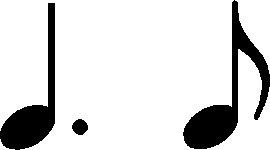



Issues : Chopin's hesitations
|
b. 200-202
|
composition: Op. 2, Variations, complete
..
The semiquavers appearing in bars 200 and 202 in AsI are the original version, since dotted rhythms appear both in A and editions, as well as in printed orchestral parts. However, in the orchestra part of AsI, the situation is not so clear. Its notation in bars 200-202 is short – only the part of the first violins and cellos with double basses and "as above" repeated several times, which probably refers to the previous Tutti. In bar 200, the violin part has a dotted rhythm (written incorrectly, perhaps added in a hurry), and the bass part has a semiquaver rhythm. category imprint: Differences between sources; Corrections & alterations issues: Chopin's hesitations , Main-line changes |
|||||||||||
|
b. 201-202
|
composition: Op. 44, Polonaise in F♯ minor
..
The corrections visible in AImaz reveal that initially the topmost note of the 1st chord in b. 202 was g category imprint: Corrections & alterations; Source & stylistic information issues: Chopin's hesitations |
|||||||||||
|
b. 202-204
|
composition: Op. 38, Ballade in F major
..
The ending of the Ballade has a few versions proving Chopin's hesitations. We present them below in a chronological order:
As it can be seen, Chopin had two main concepts of the Ballade's endings, "open" and "close." According to us, it is the version No. 1 that presents the first of them in the most thoughtful manner, while in the case of the latter it is the version No. 4. In the main text we give the version No. 1, enriched with variant, characteristic for Chopin grace note added in GC. category imprint: Interpretations within context; Differences between sources; Corrections & alterations; Source & stylistic information issues: Corrections in A , Chopin's hesitations , Errors resulting from corrections , Terzverschreibung error , Deletions in A , Authentic corrections of FE , Errors of GC , Authentic corrections in GC |
|||||||||||
|
b. 204-205
|
composition: Op. 44, Polonaise in F♯ minor
..
In AImaz a dotted rhythm is to be found three times here – category imprint: Corrections & alterations; Source & stylistic information issues: Chopin's hesitations , Dotted or even rhythm |
|||||||||||
|
b. 262
|
composition: Op. 2, Variations, complete
..
The versions of Af and A, identical in terms of the way they sound, differ only in additions – an indication specifying the instrumental group in Af and a category imprint: Differences between sources; Corrections & alterations issues: Chopin's hesitations , Errors in GE , Accompaniment changes , Authentic corrections of FE |

 1, which Chopin then changed to a1, tied from the previous bar. The final version features g
1, which Chopin then changed to a1, tied from the previous bar. The final version features g





 on the 1st beat of b. 204 and on the 2nd beat of b. 205 and
on the 1st beat of b. 204 and on the 2nd beat of b. 205 and  further on in b. 204. In the case of the latter, the dots prolonging the crotchets and the quaver flags were most probably added as a change of the initial version with two crotchets. In the final version of the Polonaise, this motif appears twice (also in b. 145-146), in which a dotted rhythm was used only at the beginning of b. 145.
further on in b. 204. In the case of the latter, the dots prolonging the crotchets and the quaver flags were most probably added as a change of the initial version with two crotchets. In the final version of the Polonaise, this motif appears twice (also in b. 145-146), in which a dotted rhythm was used only at the beginning of b. 145.
 in
in